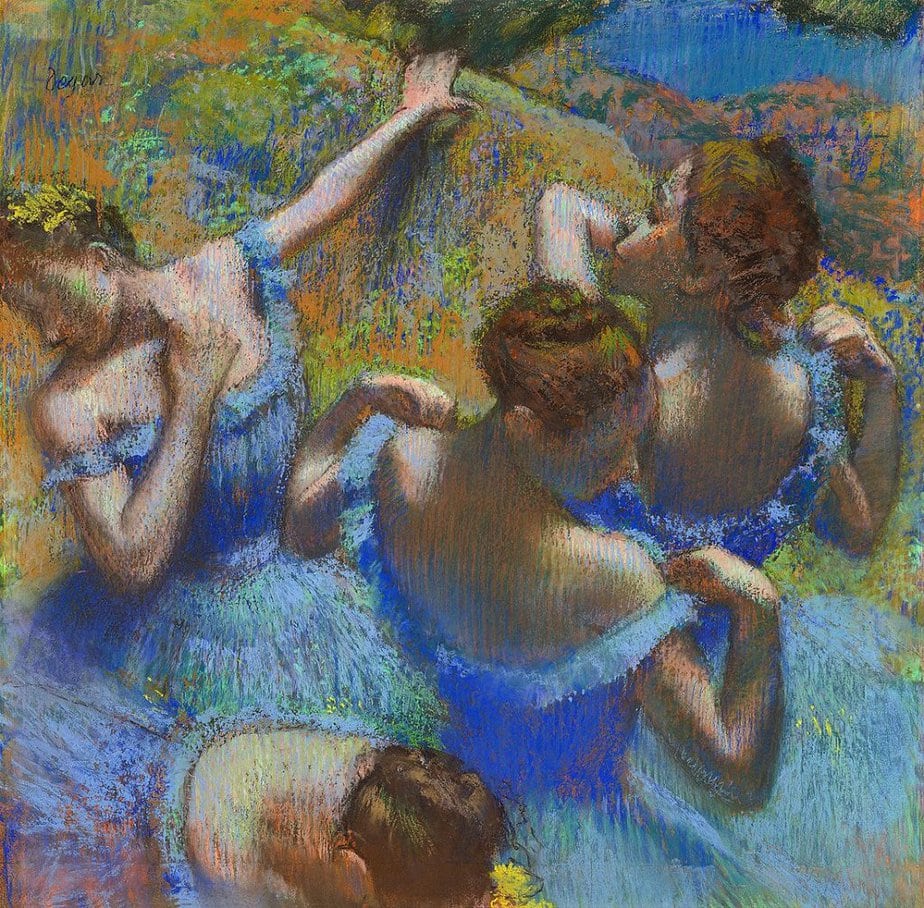Edgar Degas, a prominent French Impressionist artist, is renowned for his captivating depictions of the ballet and dance scenes of 19th-century Paris. His keen observation, mastery of composition, and innovative use of color and light enabled him to create a series of iconic paintings that beautifully encapsulate dancers’ grace, movement, and emotion.
Degas’ dance paintings continue to inspire and fascinate viewers, offering a unique glimpse into the world of ballet and the lives of the dancers themselves.
His works frequently depicted dancers during rehearsals, pre-performance preparations, or moments of rest. By doing so, Degas humanized the dancers, revealing their dedication, determination, and vulnerability. He portrayed the physical and emotional toll that ballet exacts on its performers, showcasing their resilience and passion.
Edgar Degas created numerous artworks featuring dancers, capturing their movements, emotions, and the atmosphere of the ballet world. Here are some notable dancer paintings by Degas.
The Dance Class (1874)

This painting depicts a ballet class in progress, with a group of dancers practicing their moves under the guidance of a ballet master.
Degas’ keen eye for detail is evident in the way he captures the dancers’ poses and expressions, as well as the interaction between the dancers and their instructor.
The Star (1876)
In this painting, Degas focuses on a solitary ballerina standing on stage, bathed in the glow of the spotlight.
The dancer’s graceful pose and the dramatic lighting evoke a sense of drama and anticipation, capturing the magic of a performance.
Dancers in the Green Room(1879)
This painting offers a behind-the-scenes look at the ballet world, showing a group of dancers relaxing and conversing in the green room before a performance.
Degas’ use of color and light creates a sense of intimacy and warmth, inviting viewers to share in the camaraderie of the dancers.
Dancers Practicing at the Barre (1877-1878)
In this painting, Degas depicts a group of dancers practicing their technique at the ballet barre.
The repetitive motion of the dancers’ exercises and the focused expressions on their faces convey the discipline and dedication required of ballet dancers.
The Rehearsal (1873-1874)
This painting captures a scene from a ballet rehearsal, with dancers rehearsing their steps on stage while others wait in the wings.
Degas’ use of perspective and composition creates a sense of depth and movement, drawing viewers into the bustling energy of the rehearsal space.
These are just a few examples of Edgar Degas’ dancer paintings, which collectively offer a rich and nuanced portrayal of the ballet world. Through his innovative compositions, expressive brushwork, and keen attention to detail, Degas captured the beauty, grace, and drama of dance in a way that continues to resonate with viewers today.
Edgar Degas’ dancing paintings are a testament to his unparalleled talent as an artist and his profound understanding of the human form. Through his innovative compositions, masterful use of color and light, and keen attention to gesture and expression, Degas captured the essence of dance in a way that transcends time and continues to inspire viewers to this day. His paintings offer a window into the captivating world of ballet, inviting us to experience the beauty, grace, and emotion of dance in all its myriad form.
The article contains sponsored affiliate links from Amazon to valuable resources.


